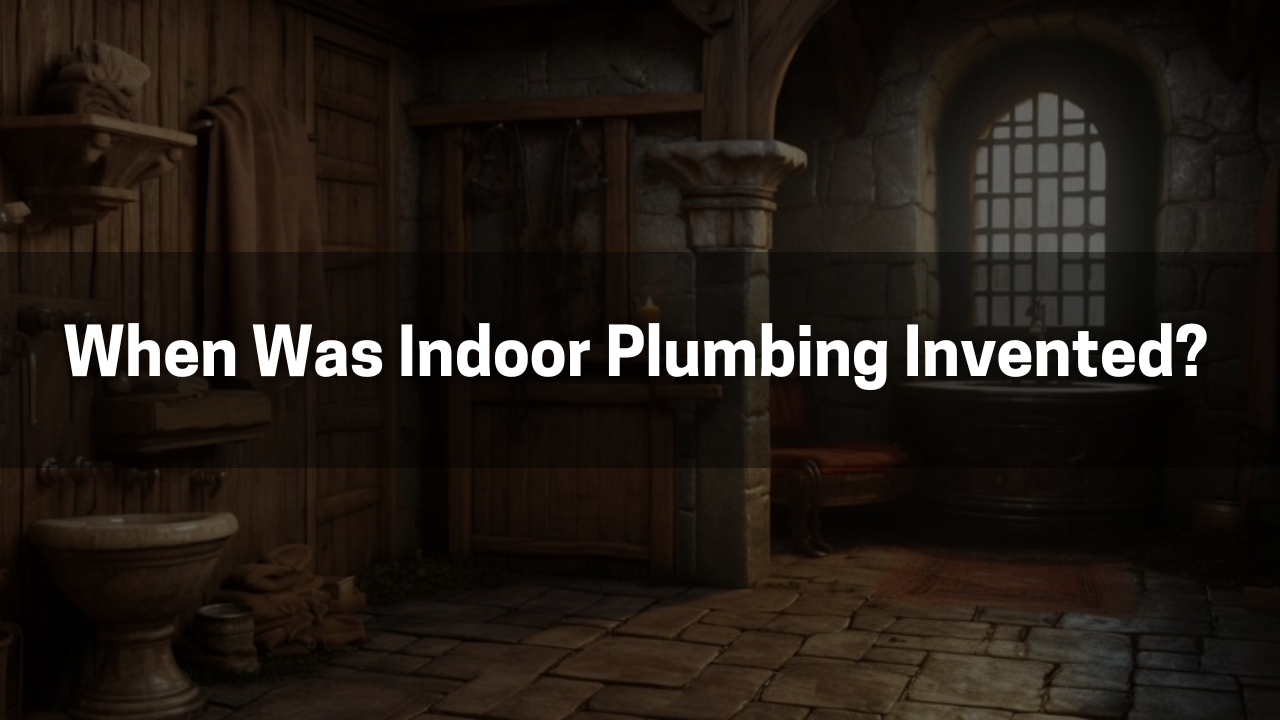Can you imagine the world without indoor plumbing? Or think this way: walking up on a chilly morning with the sun barely rising and instead of strolling into a warm bath with running water you’re forced to trudge through the snow to an outhouse!! 🥺🥺🥺 Can you feel that? Yeah!! That is the reality of human history before the invention of indoor plumbing!!
Indoor plumbing is more than just a modern convenience, it’s more like a cornerstone of civilised society… From providing access to clean water for drinking, cooking and bathing to safety deposition of water in the plumbing has uplifted the quality of life..
So in today’s article I will be on the journey through time exploring the captivating history of indoor plumbing.
When Was Indoor Plumbing Invented?
In ancient times, places like Mesopotamia, Egypt, and the Indus Valley had smartest ways of dealing with water. They built canals, reservoirs, and even irrigation systems to control water for farming and drinking. How cool is that?
It’s because they understood the importance of managing water for their communities’ survival.
People started bringing water inside their homes for the first time in the ancient Roman era.
They use simple pipes made of material like clay and stone to bring water from nearby sources like wells and rivers into their home.
This was a big deal because it meant they didn’t have to go outside to fetch water whenever they needed to.
Well, if you talk about public baths and aqueducts then these were the crucial part of ancient societies infrastructure. Aqueducts are like a big water channel that brings water from distant places into cities. Public baths were for people to gather, socialise and of course have baths together.
These amenities improved hygiene and sanitization for every human being which was especially important in crowded cities.
Impact of Urbanisation on Sanitation Needs
During the industrial revolution, old cities grew rapidly as people moved from rural areas to urban centres in search of work.
The rapid urbanisation led to overcrowding and poor living conditions which exacerbated sanitation problems.
With more people living in close proximity, the need for effective sanitation and waste management became increasingly urgent at that time…
The 19th century witnessed significant technological advancements in plumbing and sanitation.
One of the most notable invitations was the flashing toilet patented by John Harrington in 1596 but it got famous in the 19th century by inventors like Alexander Cummings and Thomas Crapper.
The flushing toilet revolutionised waste deposit by using water flush waste away that really improved hygiene and sanitation.
Moreover sewage systems developed to safely transport based on home sensities preventing contamination of water sources and reducing the spread of disease.
The Spread of Indoor Plumbing Globally
In the late 90th and early 20th centuries indoor plumbing systems became widespread in Europe and northern America.
Technological advancement tied up with government regulations and investments in infrastructure that facilitate the adaptation of indoor plumbing in urban and rural areas alike. In areas like Altona, having access to a reliable plumber is crucial for ensuring the proper functioning of plumbing systems. If you encounter any issues, don’t hesitate to reach out to a qualified plumber in Altona for assistance.
Access to clean water and sanitation improved significantly that contributed to better public health and higher quality living.
Despite progress in industry, many developing countries continue to face challenges in accessing clean water and sanitation. Factors such like limited infrastructure, rapid urbanisation, and economic constraints cause significant obstacles in enhancing the modern plumbing system.
However, there have been notable innovations that came to address these challenges like community led sanitation projects, low cost sanitation technologies and so on.
Current State Of Global Access To Indoor Plumbing
According to the world health organisation and UNICEF, significant strikes have been made in improving global access to water and sanitation in the last few decades. However disparities persist with millions of people still lacking access to basic sanitation services including indoor plumbing.
Efforts to achieve universal access to clean water and sanitation are still going on with organisations and governments working together to address infrastructure gaps, promote hygiene education and ensure equitable access for all human beings.
Also Read:

